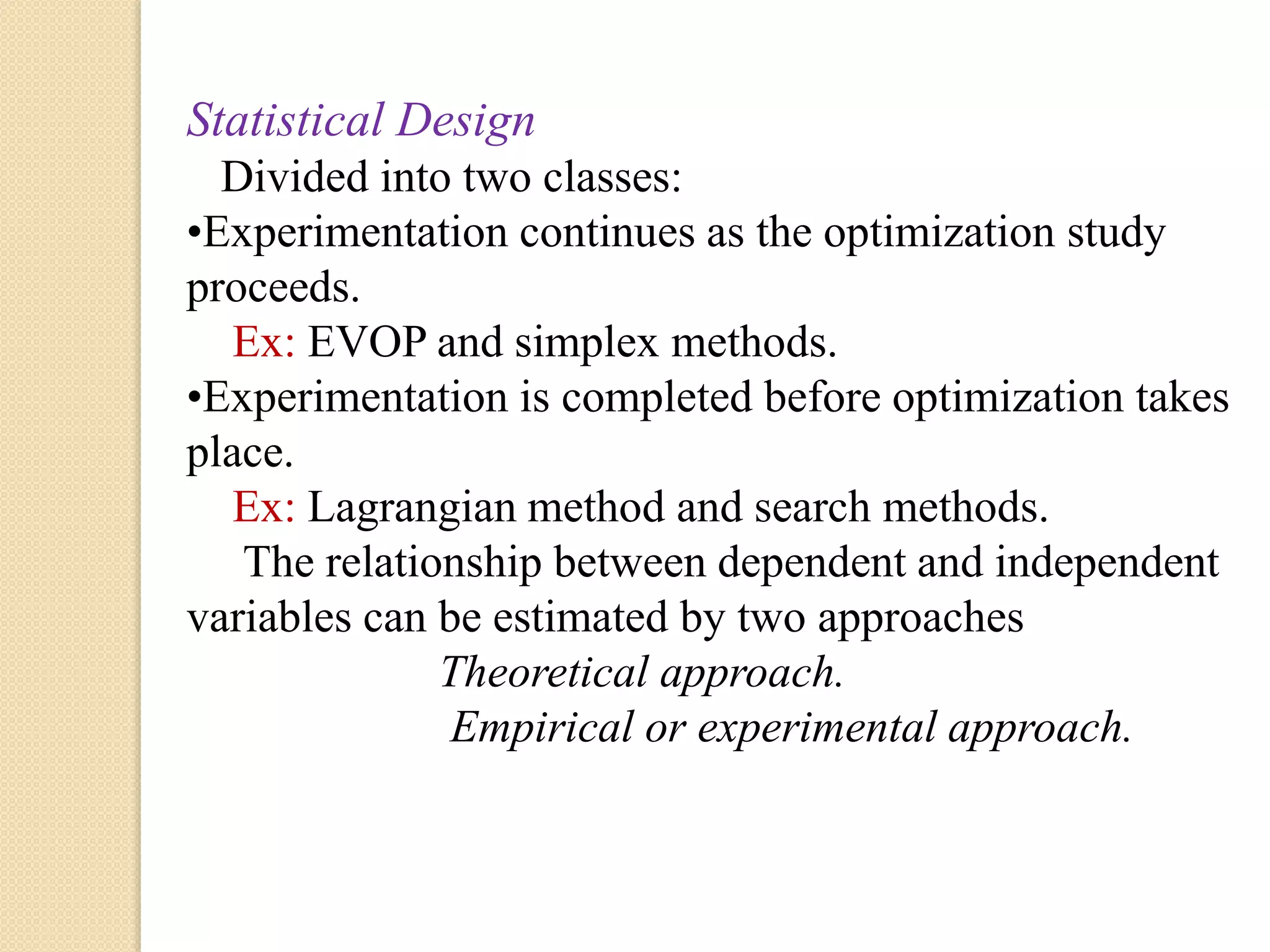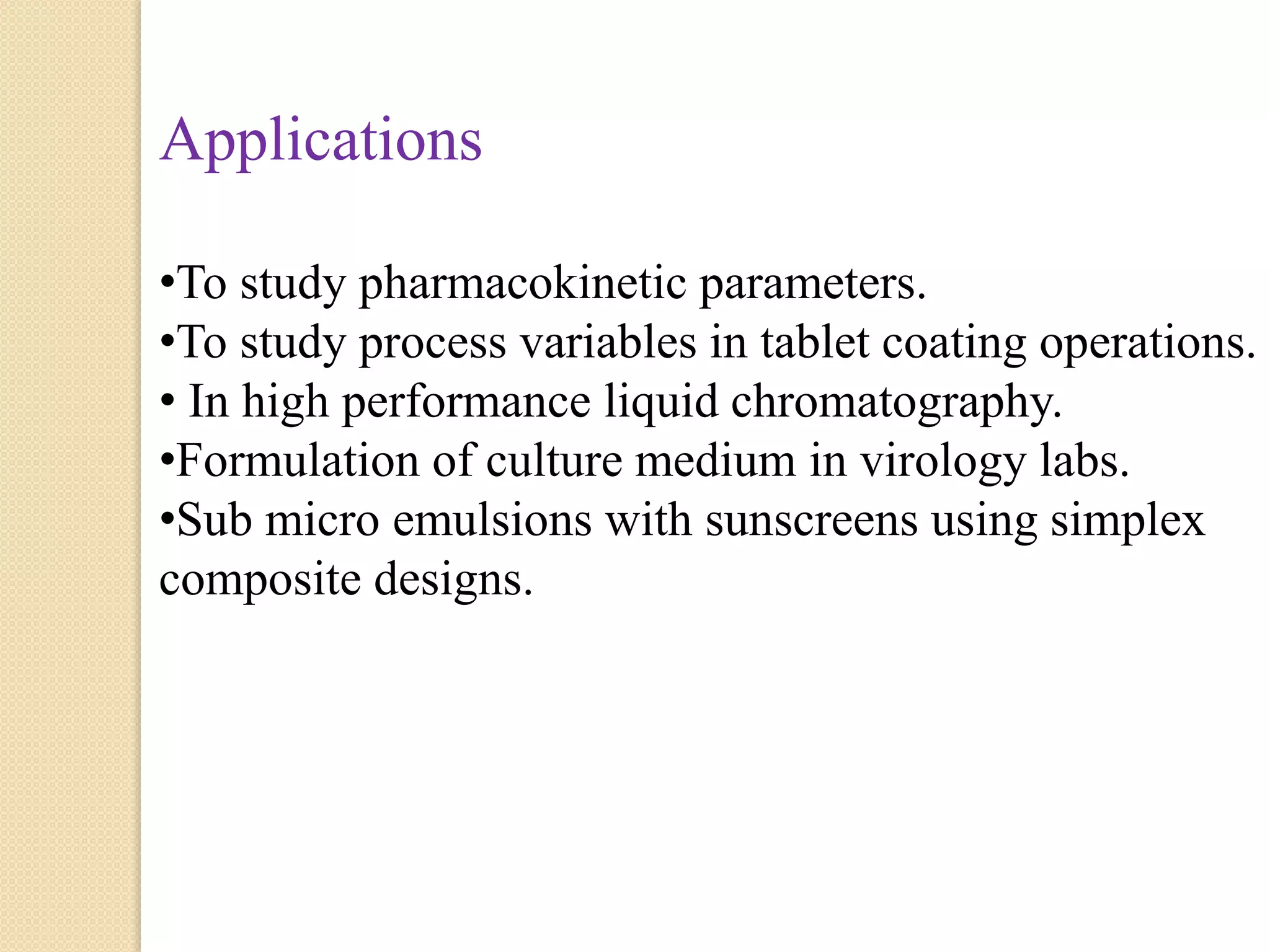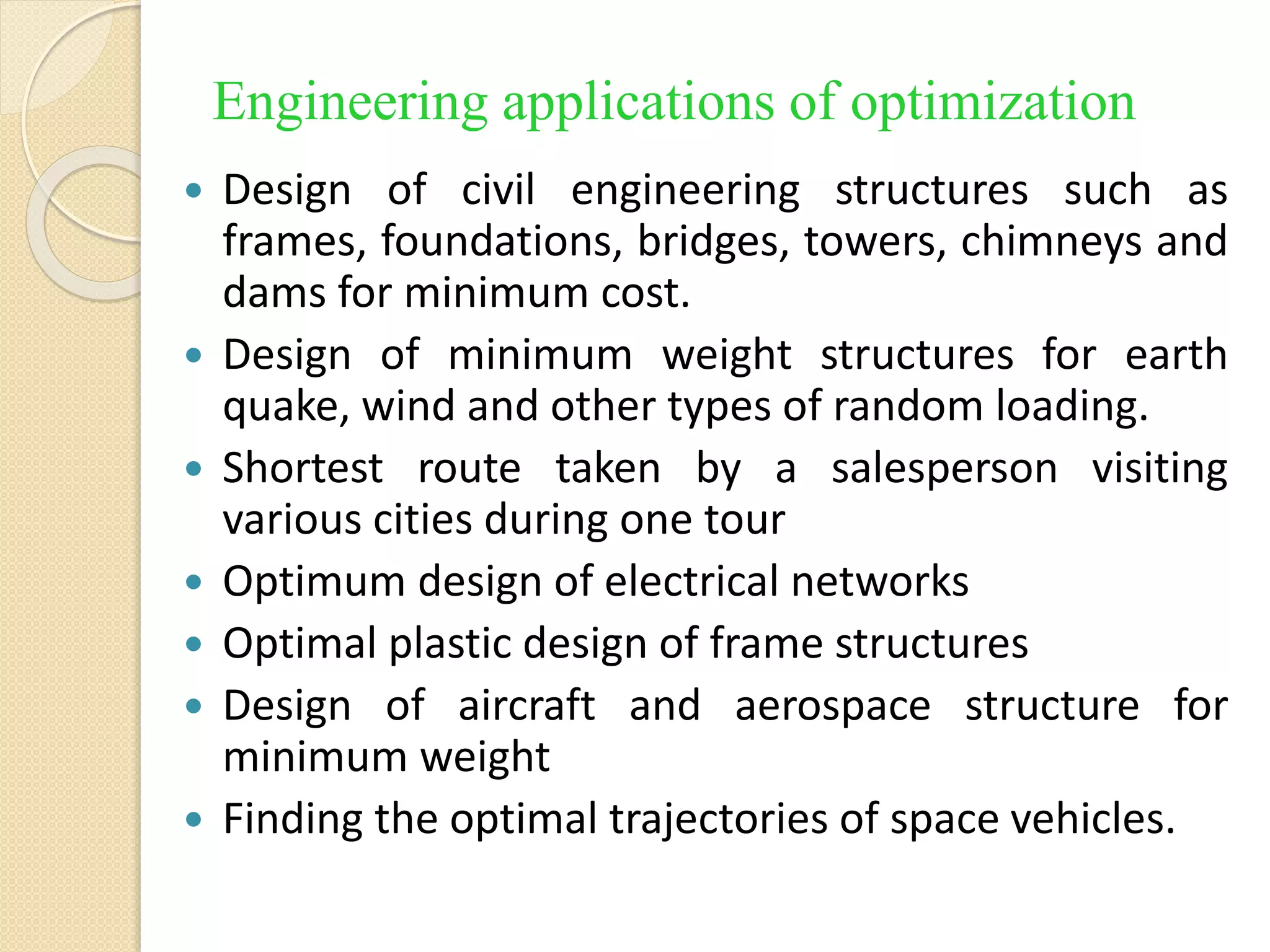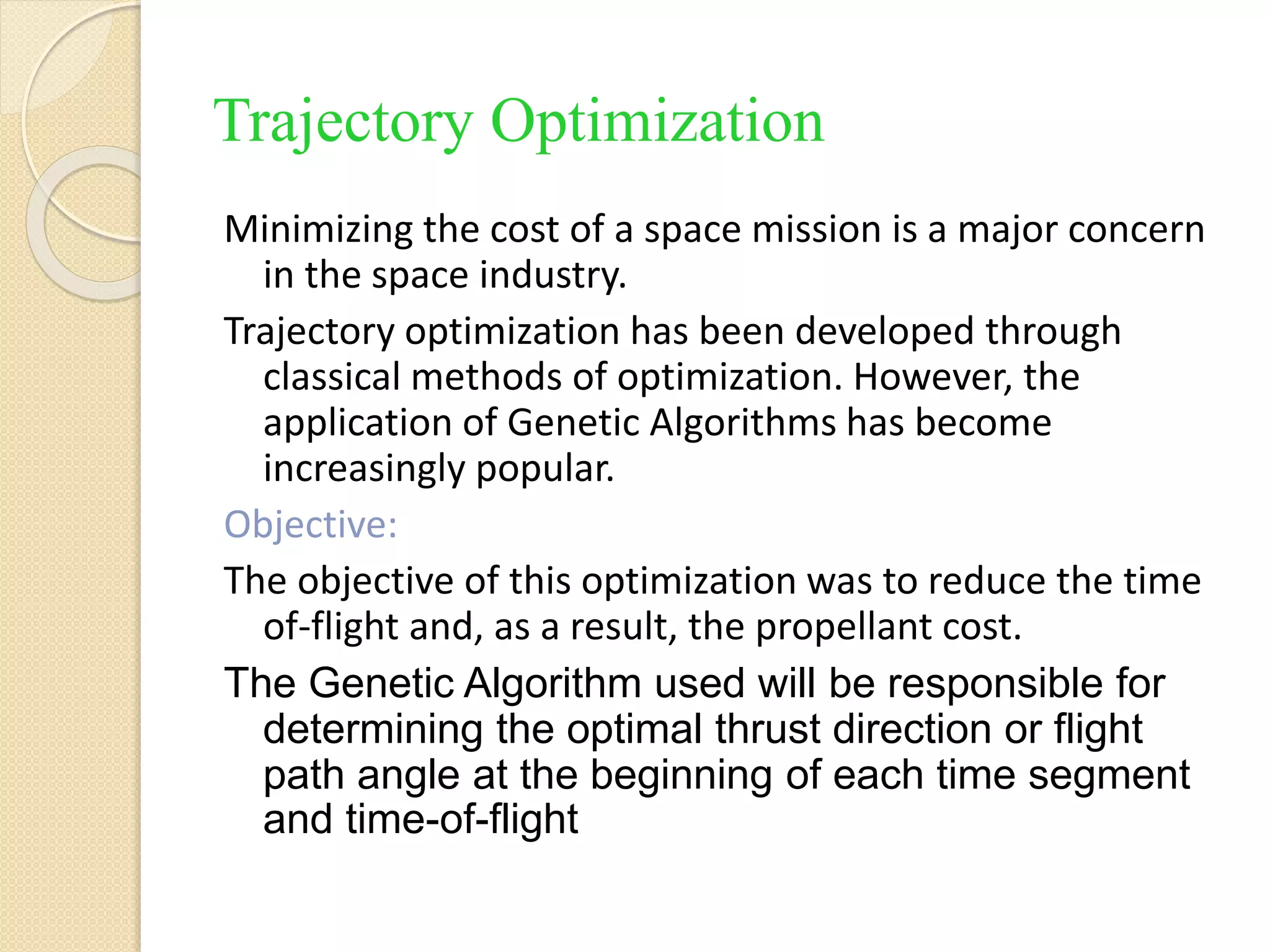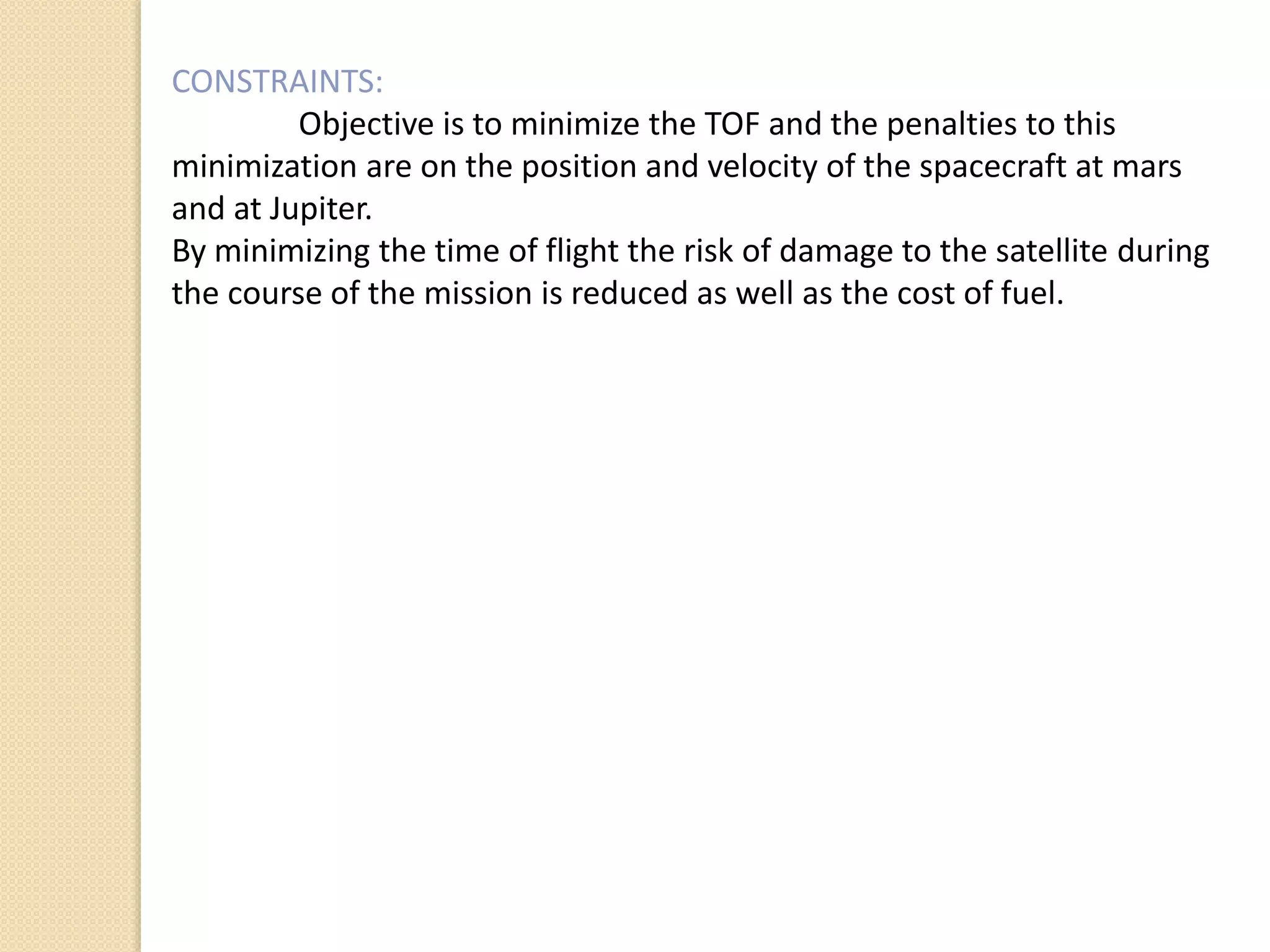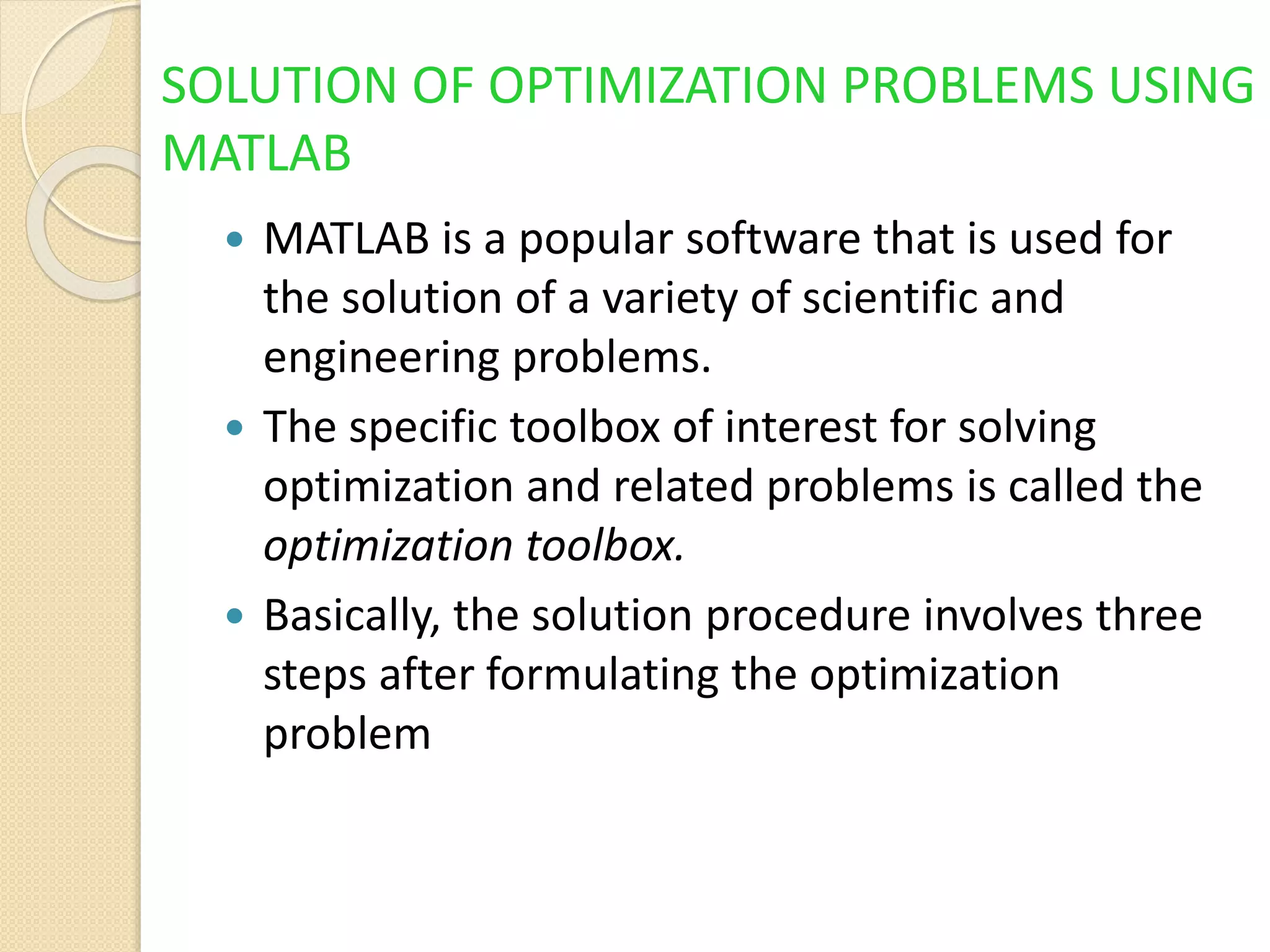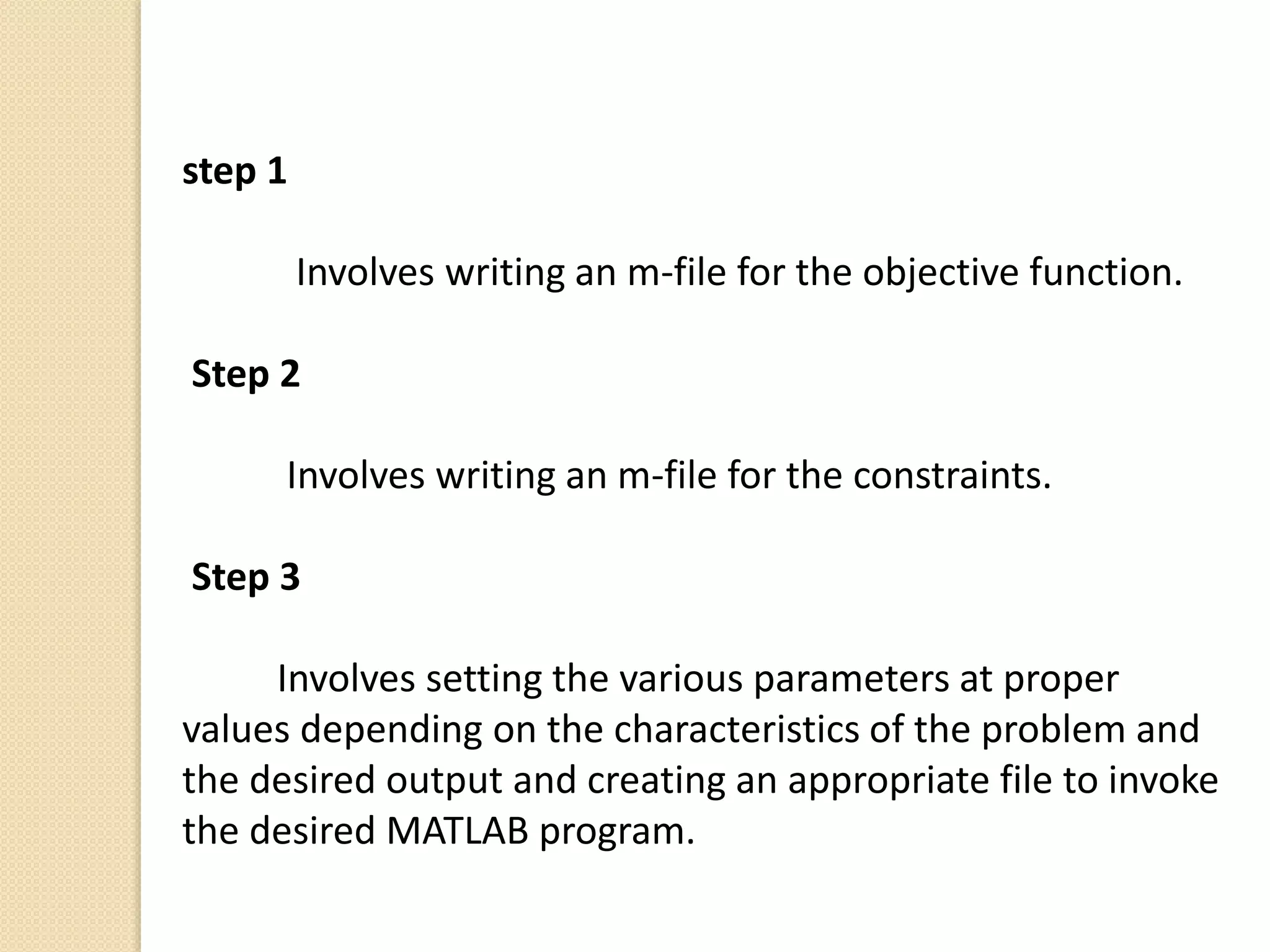OPTIMIZATION TECHNIQUES
Optimization techniques are methods for achieving the best possible result under given constraints. There are various classical and advanced optimization methods. Classical methods include techniques for single-variable, multi-variable without constraints, and multi-variable with equality or inequality constraints using methods like Lagrange multipliers or Kuhn-Tucker conditions. Advanced methods include hill climbing, simulated annealing, genetic algorithms, and ant colony optimization. Optimization has applications in fields like engineering, business/economics, and pharmaceutical formulation to improve processes and outcomes under constraints.
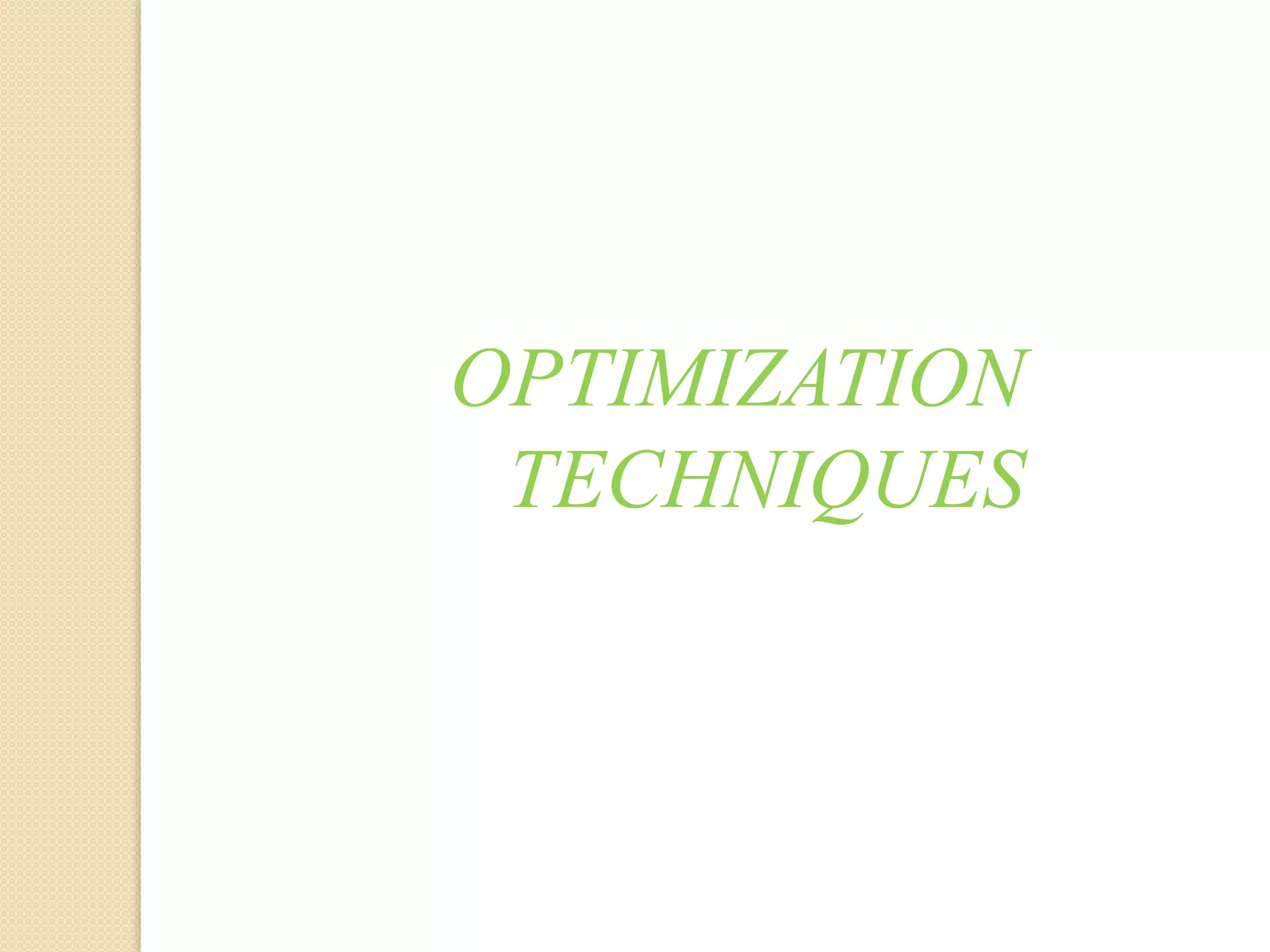

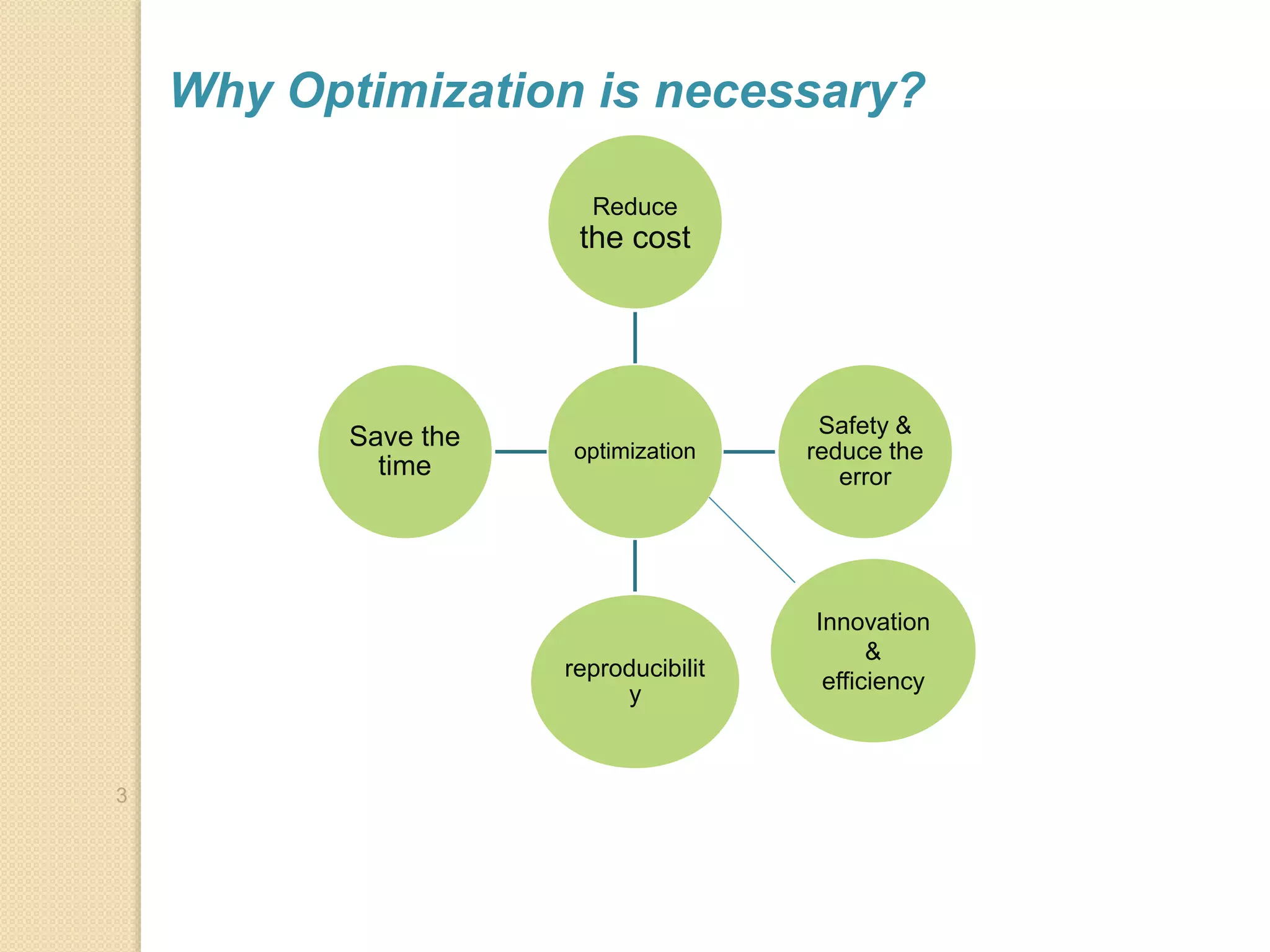
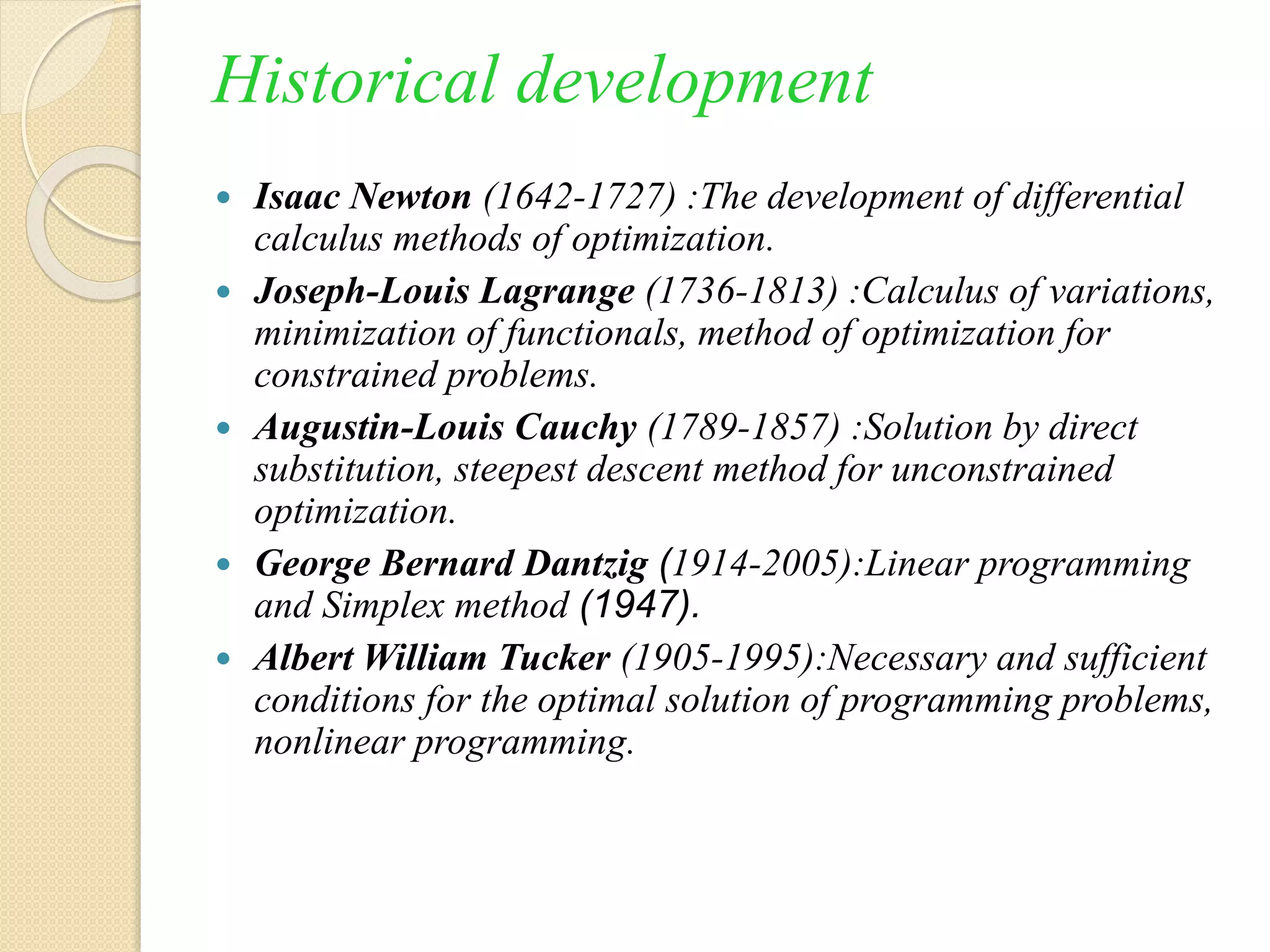
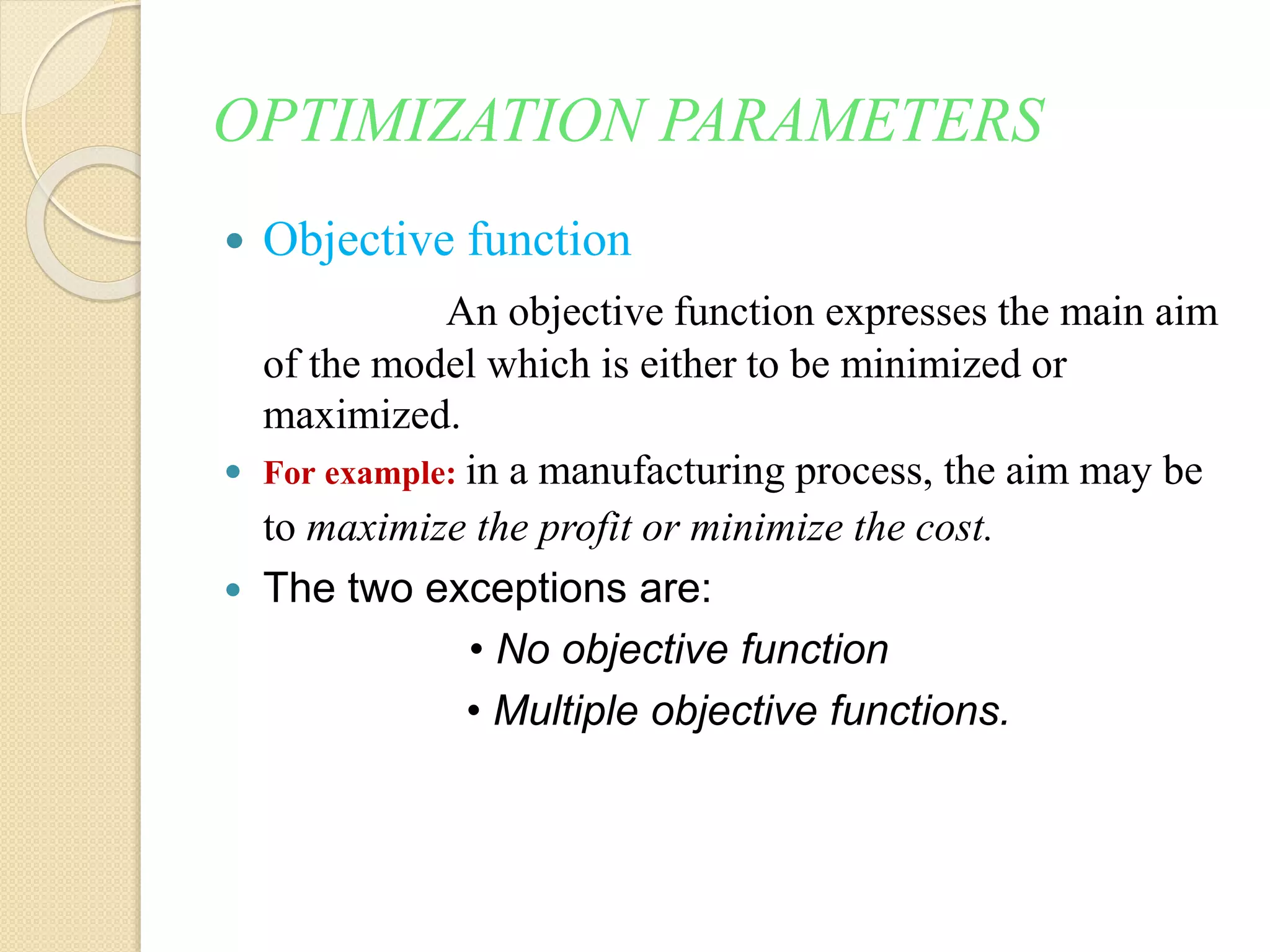
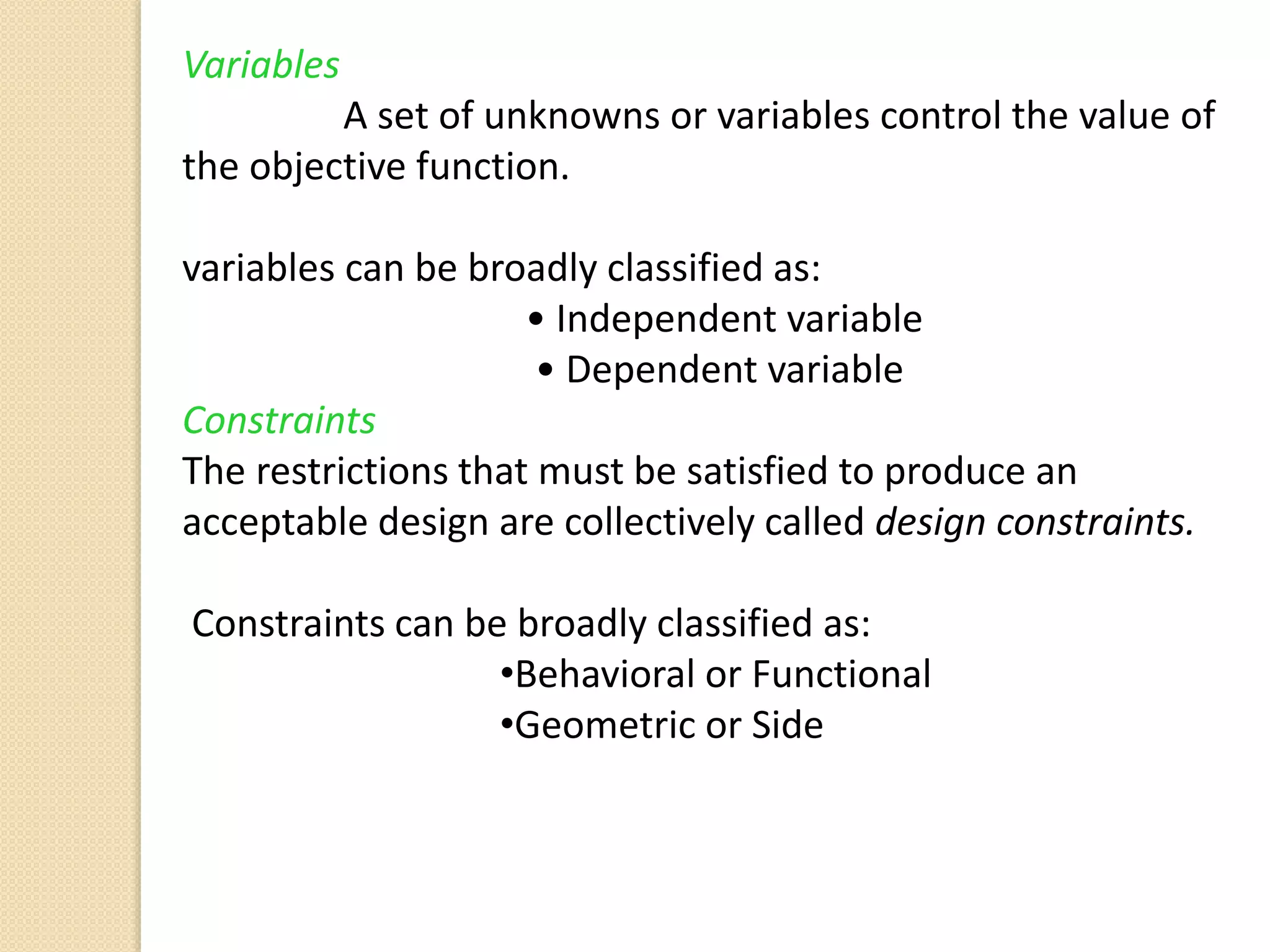
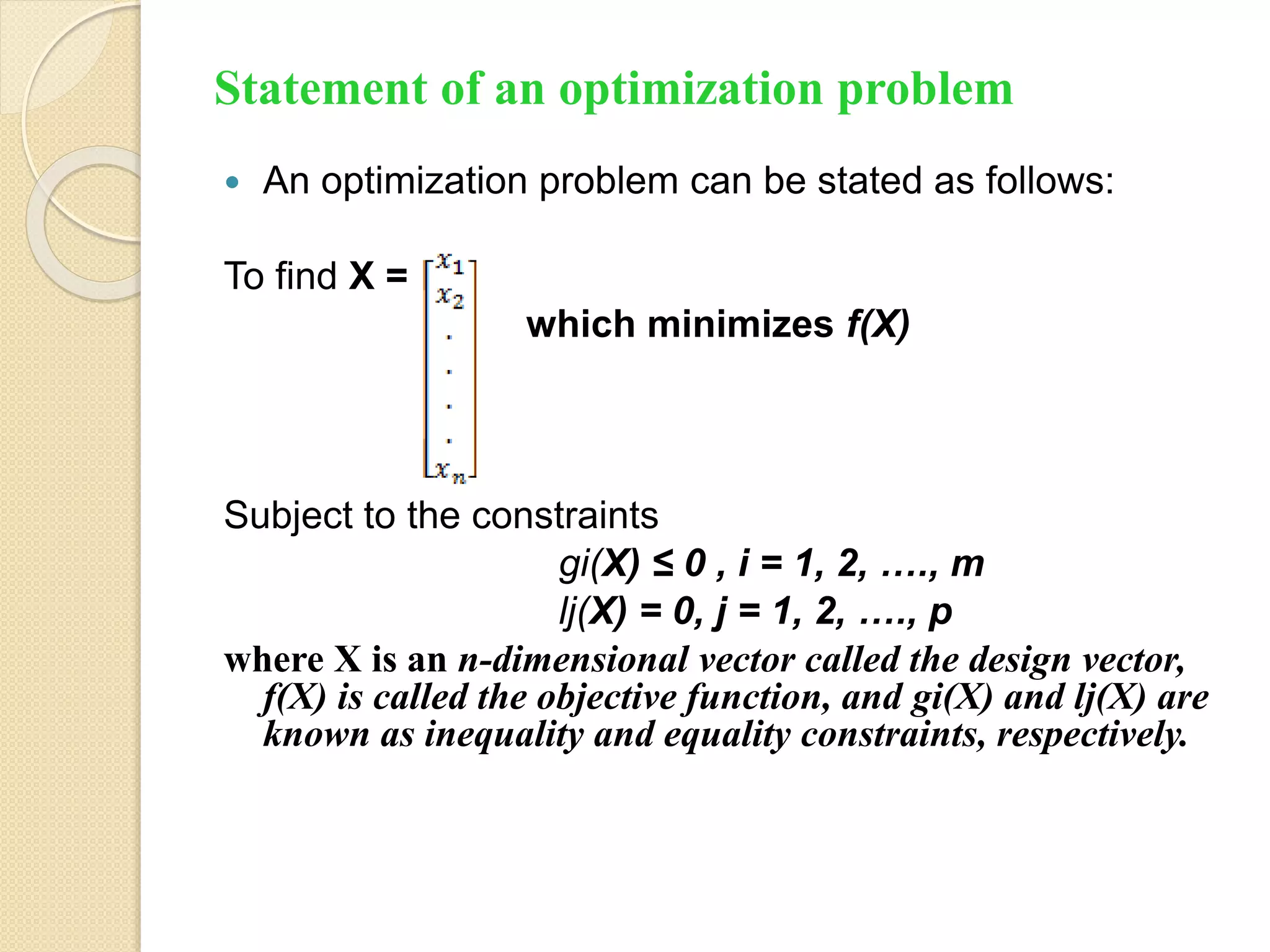
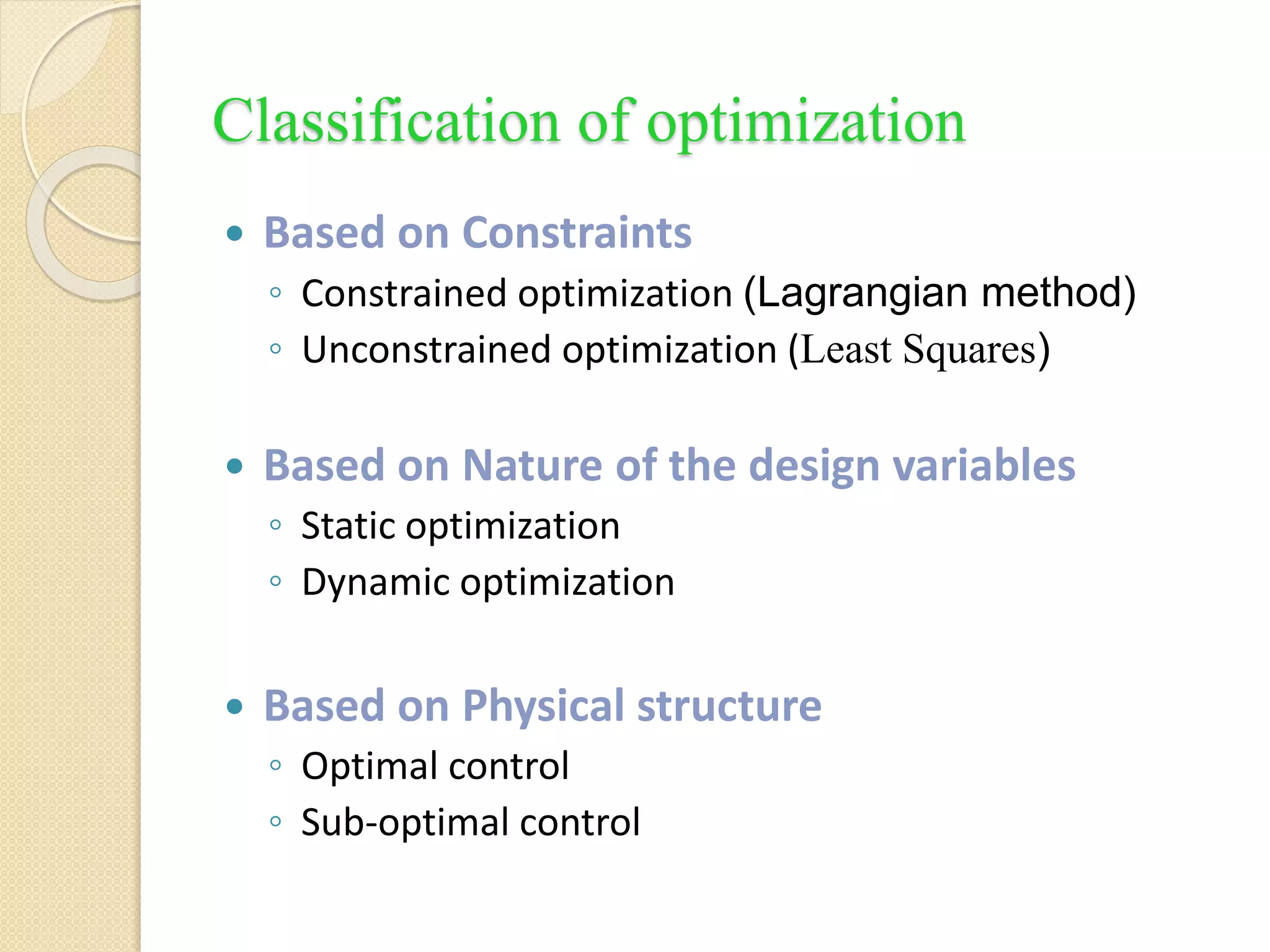
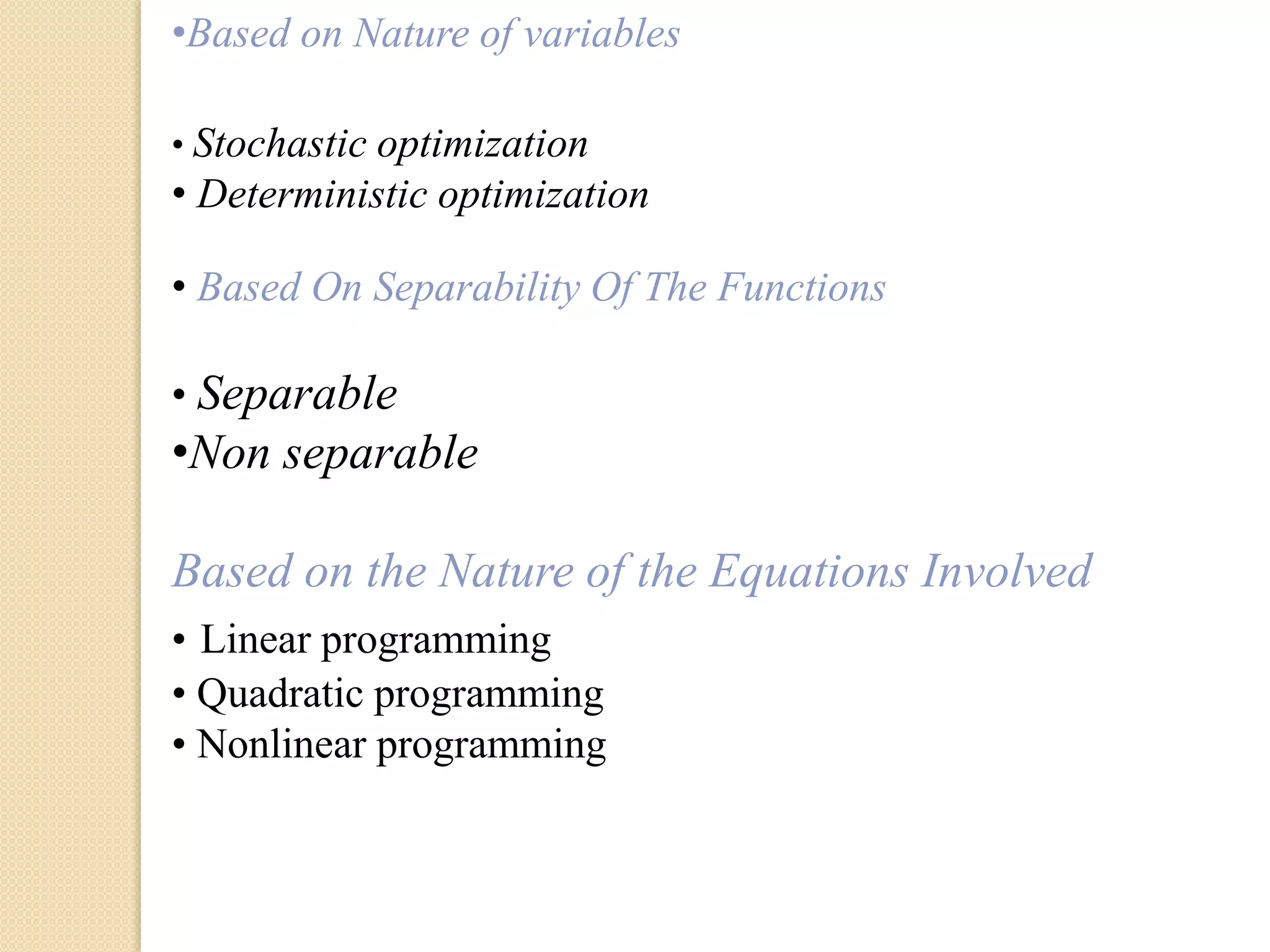
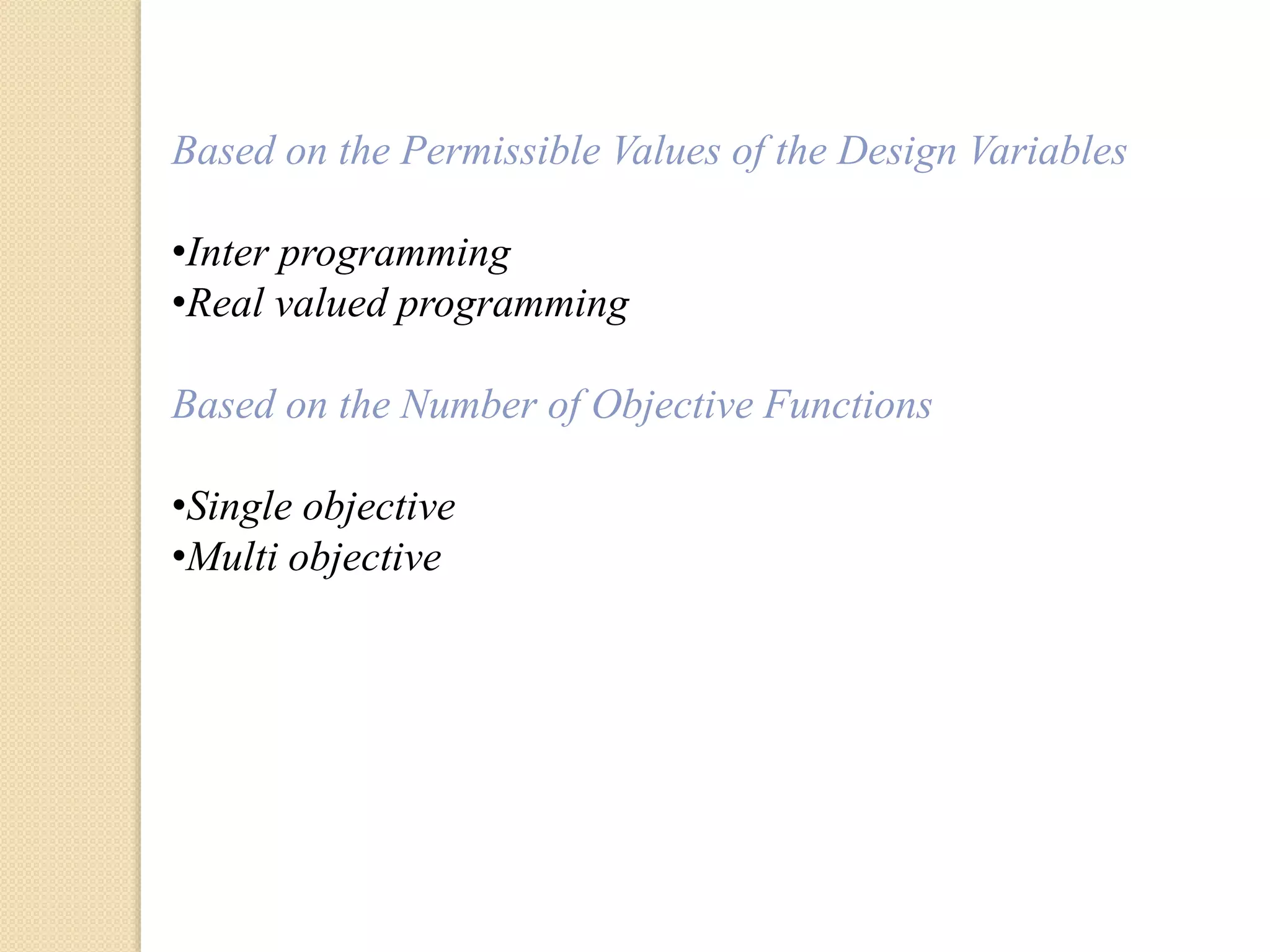
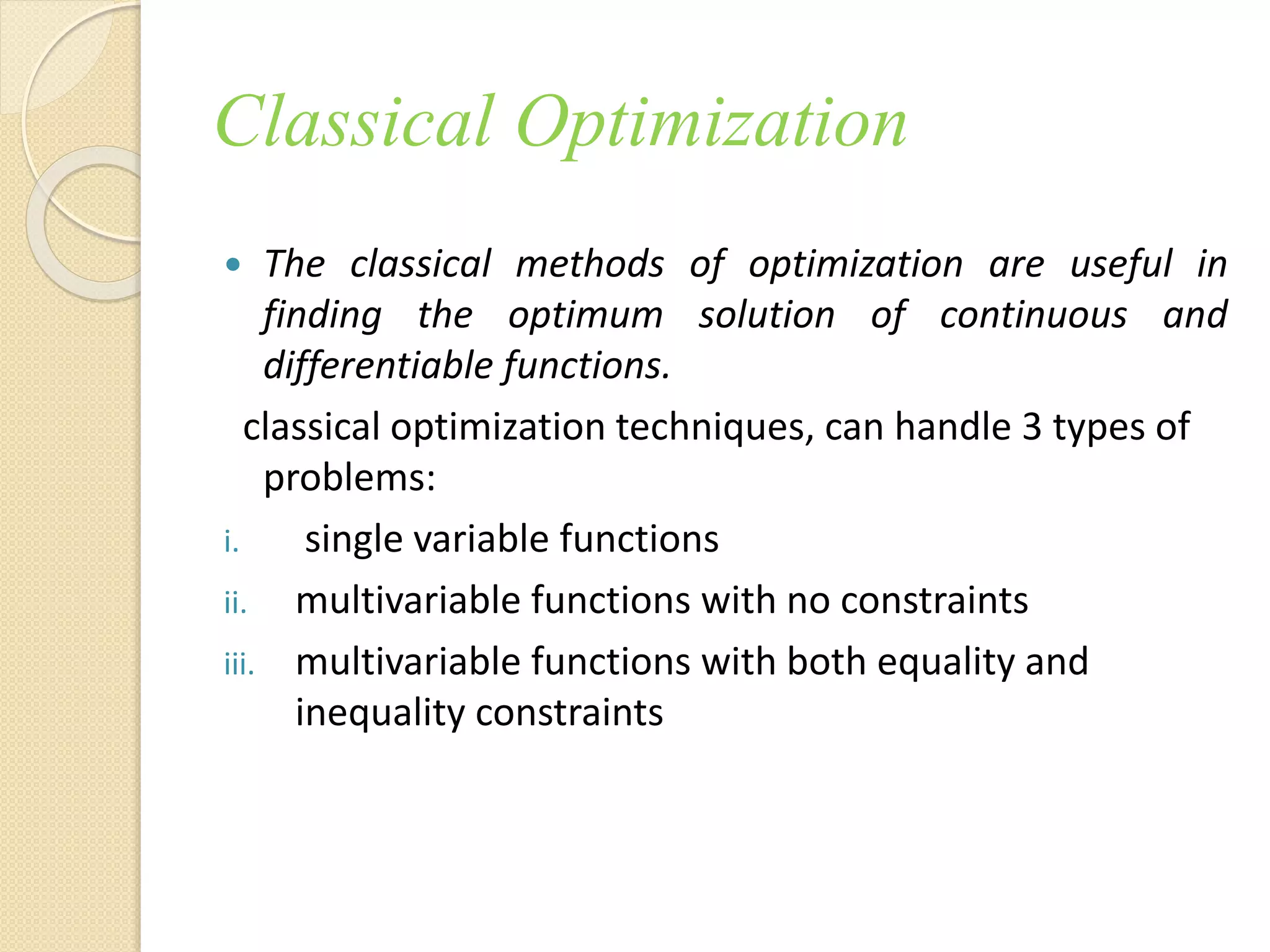
![Single variable optimization:
A single-variable optimization problem is one in which
the value of x = x ∗ is to be found in the interval [a, b]
such that x ∗ minimizes f (x).
f (x) at x = x ∗ is said to have a
local minimum if f (x∗ ) ≤ f (x∗ + h) for all small ± h
local maximum if f (x∗ ) ≥ f (x∗ + h) for all values of
h≈0
Global minimum if f (x∗ ) ≤ f (x) for all x
Global maximum if f (x∗ ) ≥ f (x) for all x](https://image.slidesharecdn.com/optmizationtechniques-230915142552-4cf13c3e/75/optmizationtechniques-pdf-12-2048.jpg)
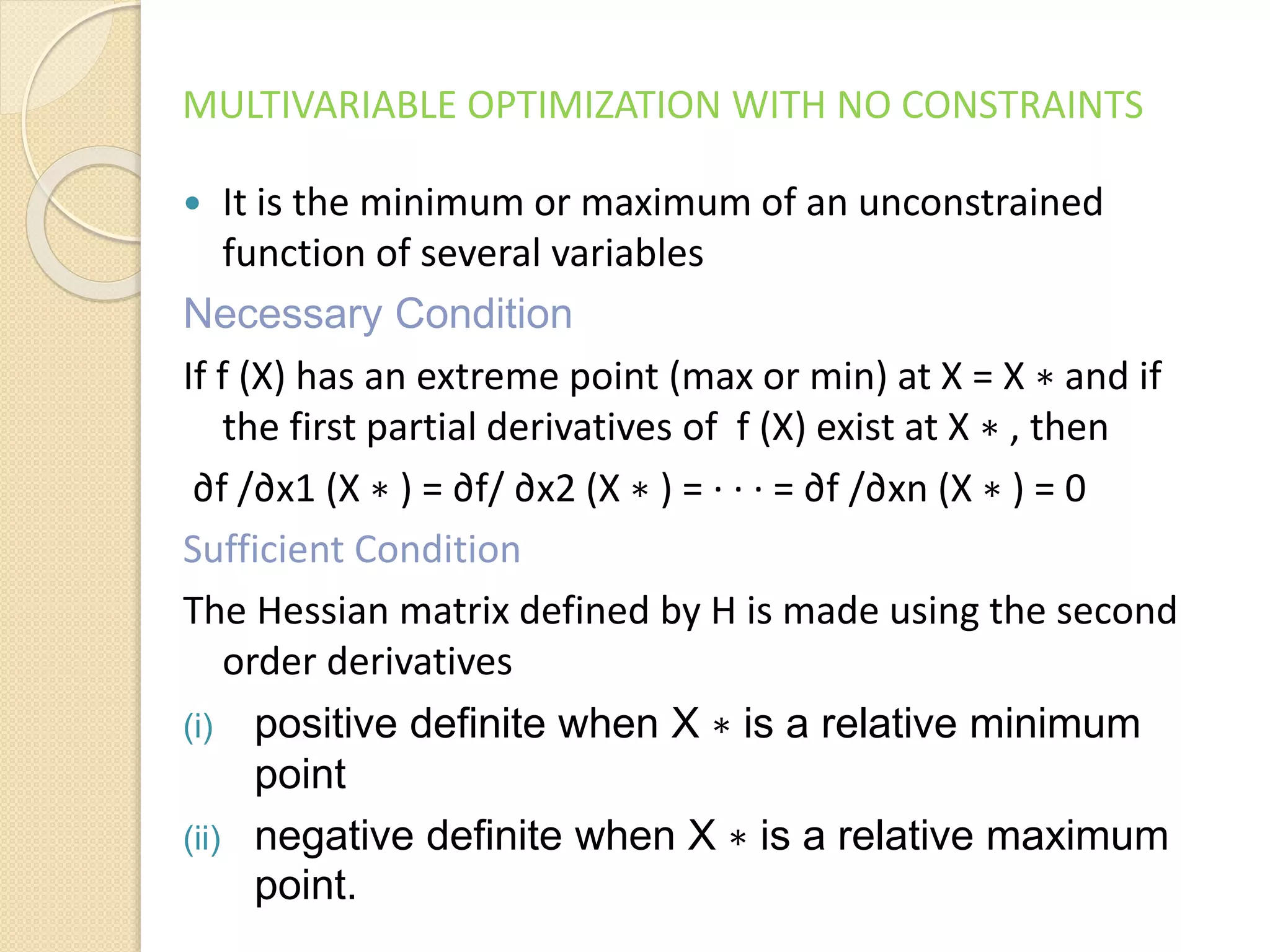
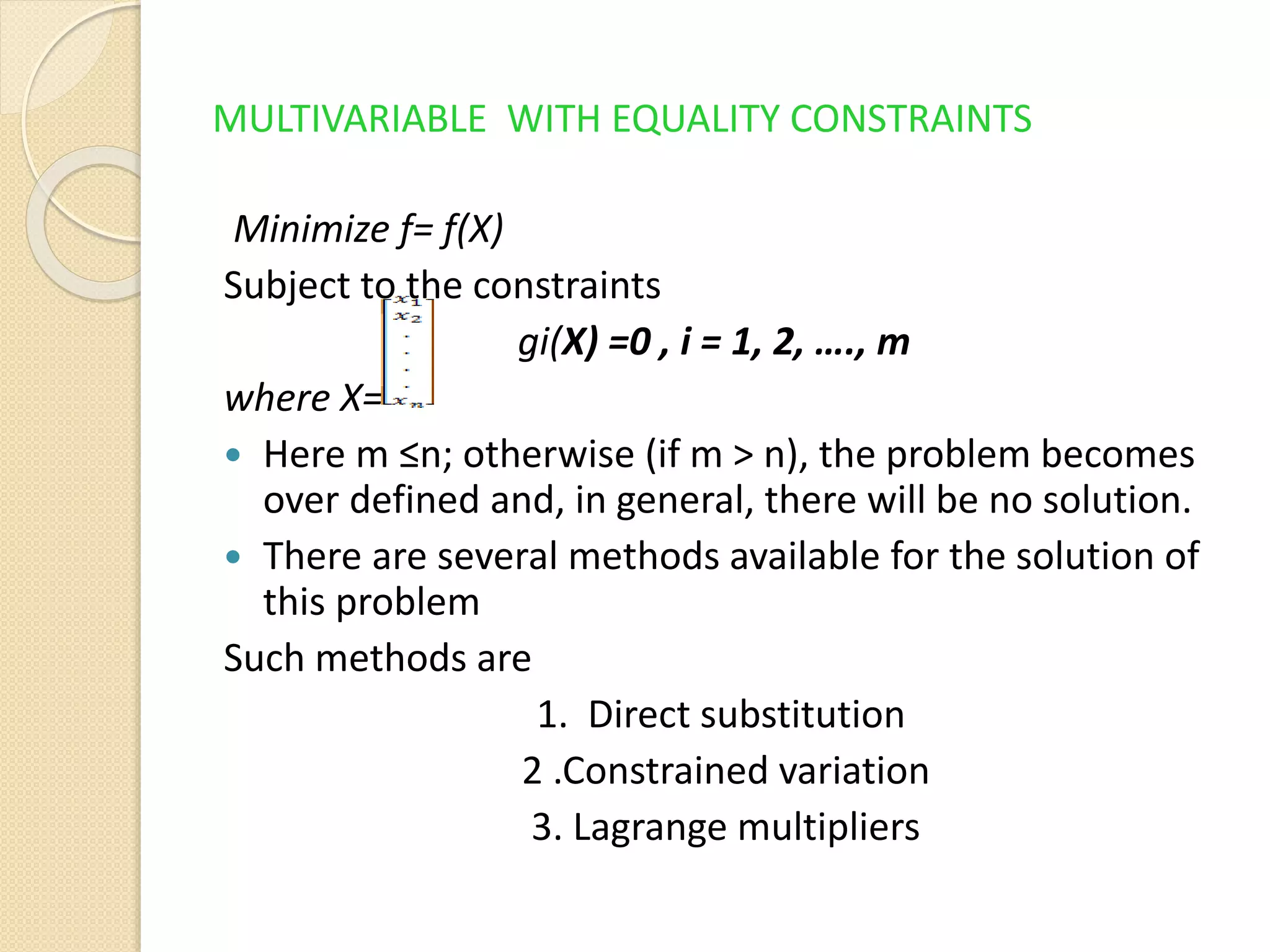
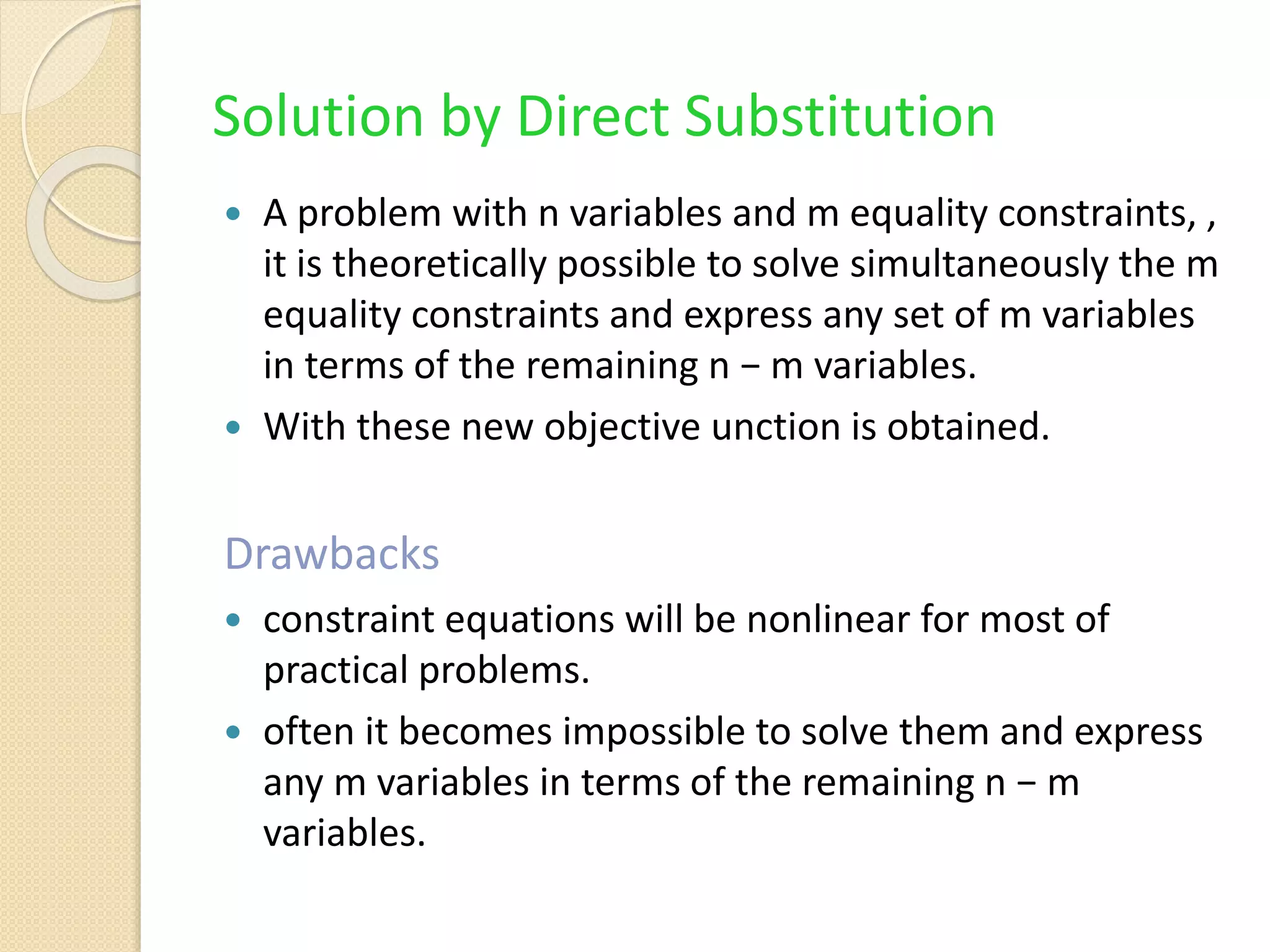
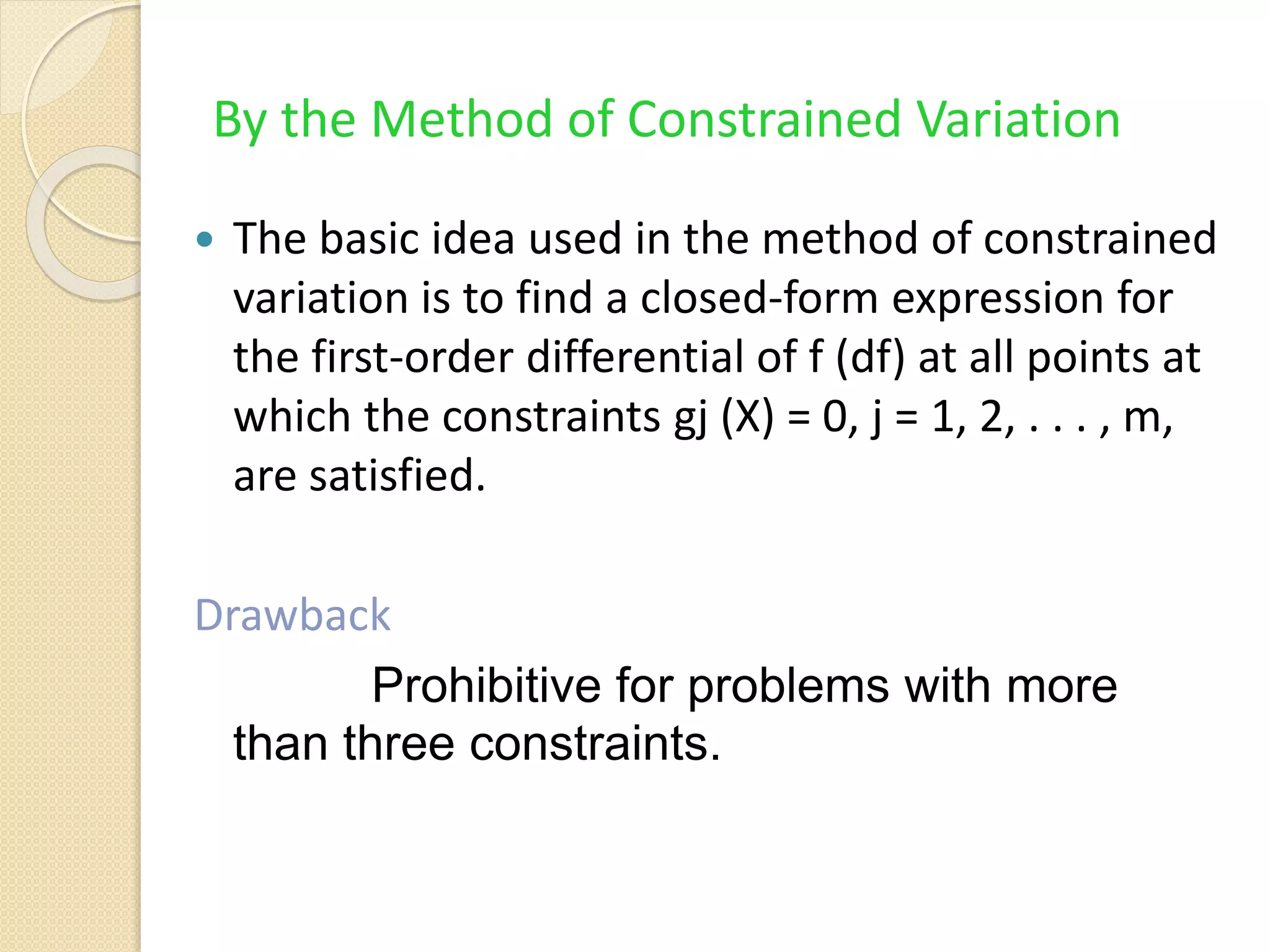
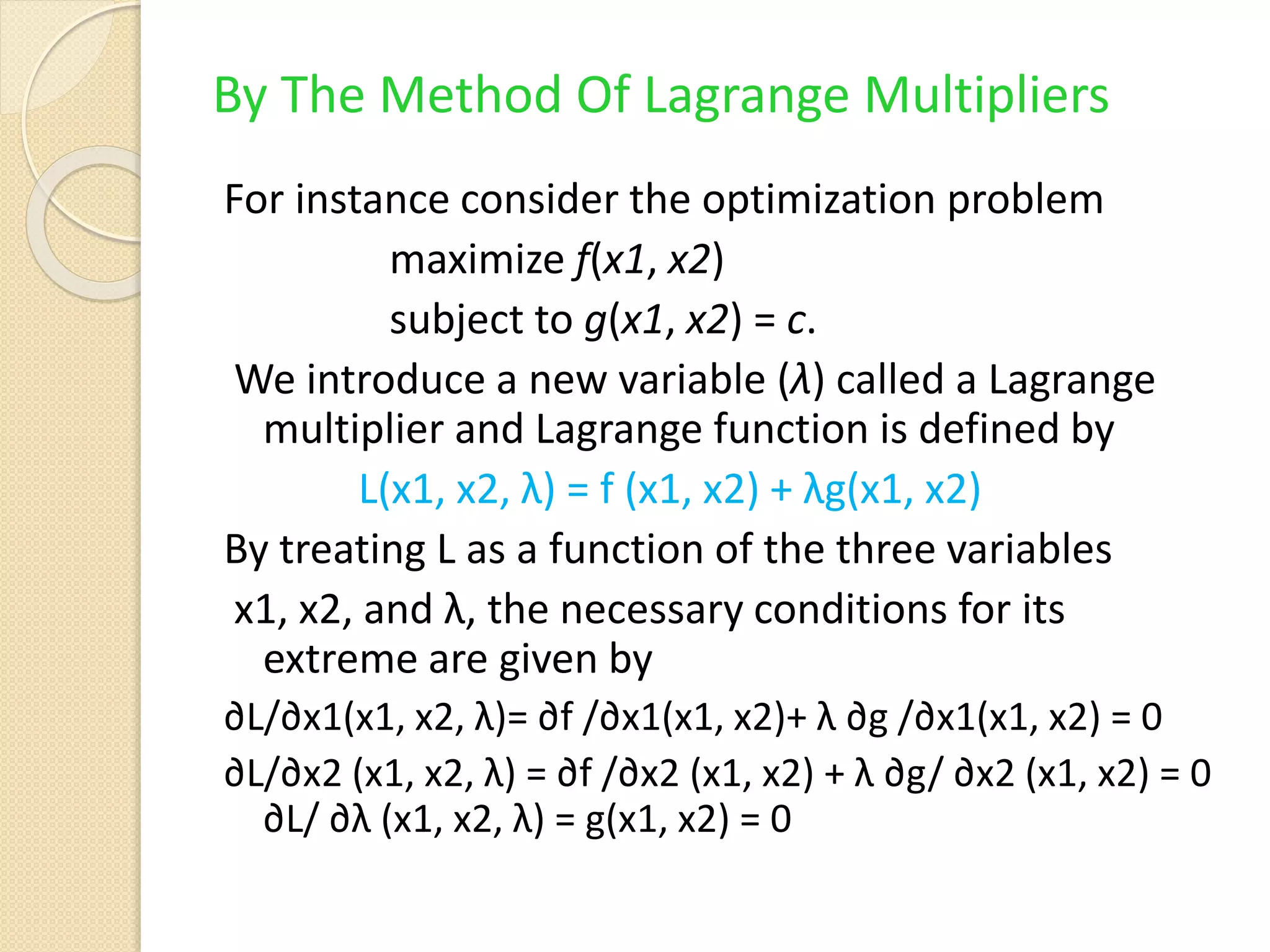
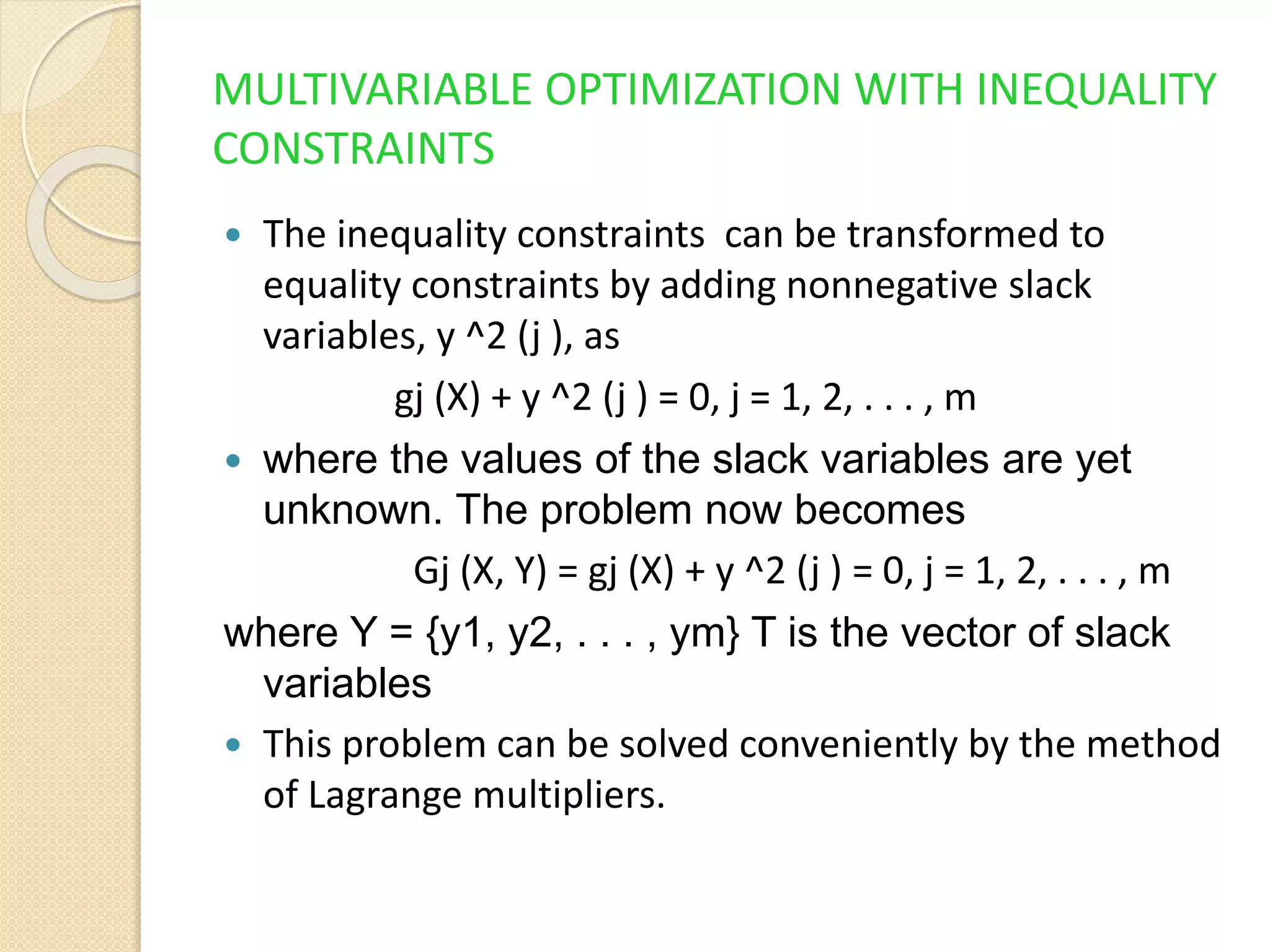
![Kuhn-Tucker conditions
Consider the following optimization problem:
Minimize f(X)
subject to gj(X) ≤ 0 for j = 1,2,…,p ;
where X = [x1 x2 . . . xn]
Then the Kuhn-Tucker conditions for X* = [x1 * x2 * . . . xn * ]
to be a local minimum are
∂f /∂xi + ∂gj/∂xi = 0, i = 1, 2, . . . , n
λjgj = 0, j = 1, 2, . . . , m
gj ≤ 0, j = 1, 2, . . . , m
λj ≥ 0, j = 1, 2, . . . , m](https://image.slidesharecdn.com/optmizationtechniques-230915142552-4cf13c3e/75/optmizationtechniques-pdf-19-2048.jpg)
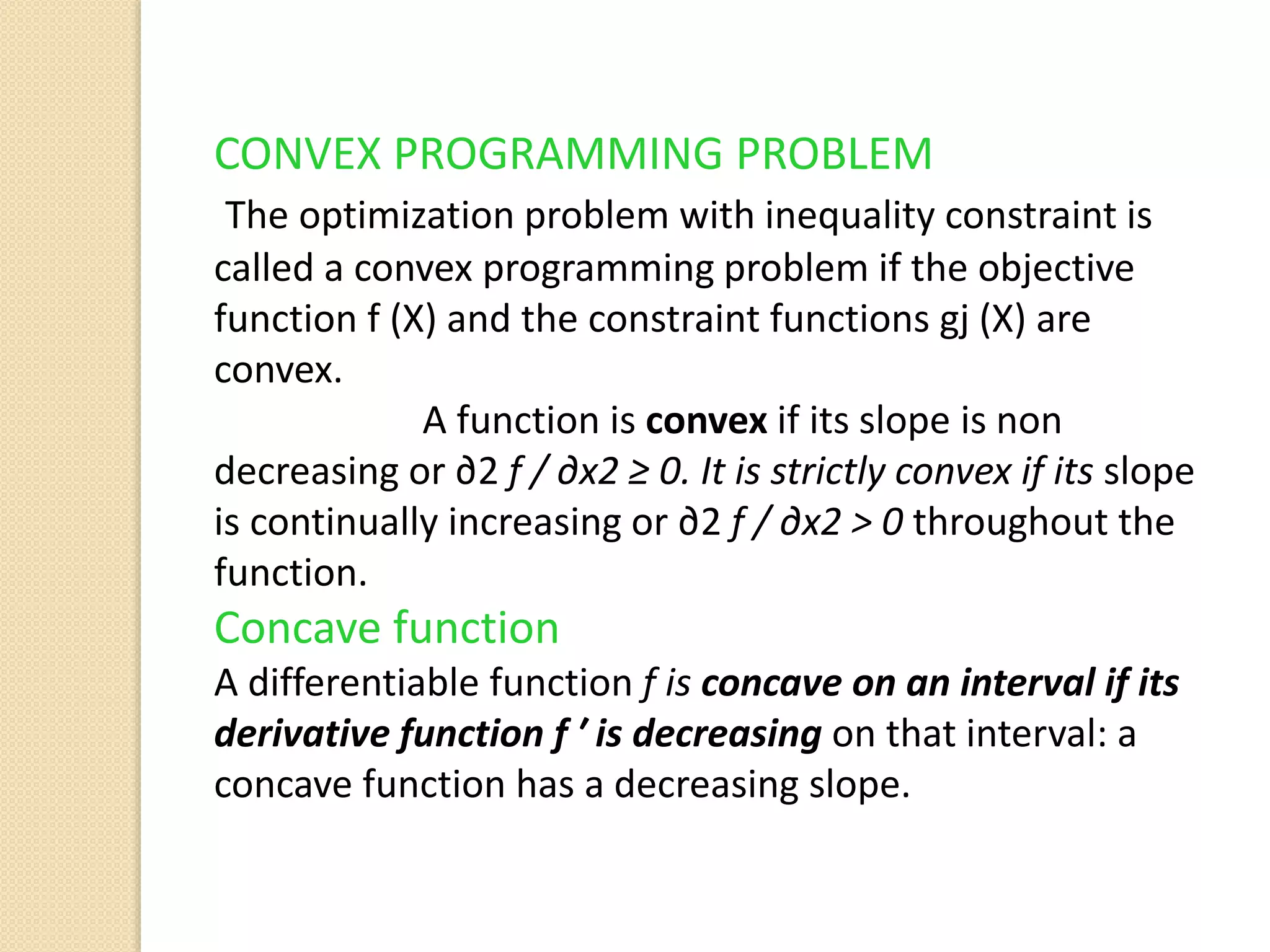
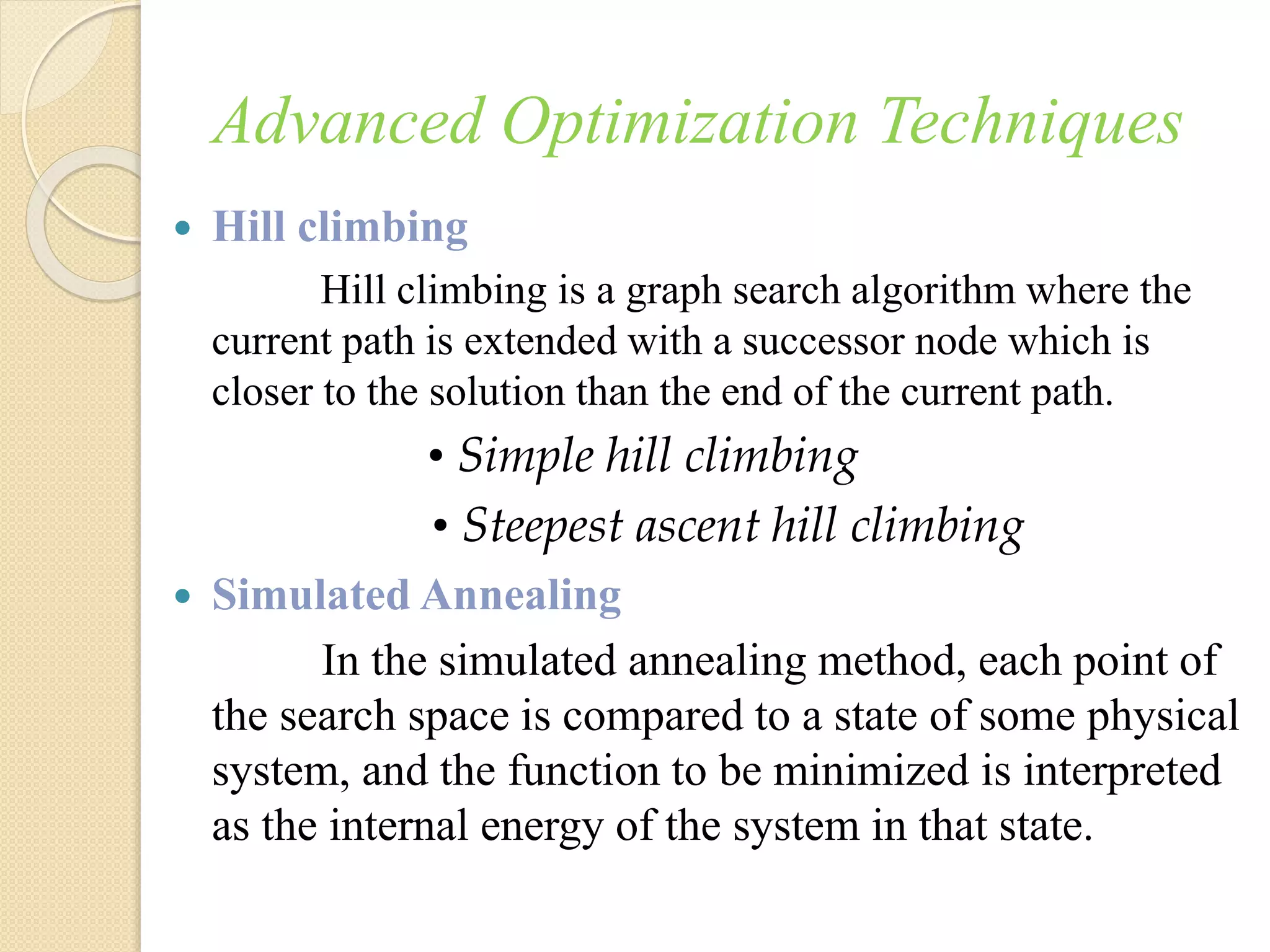
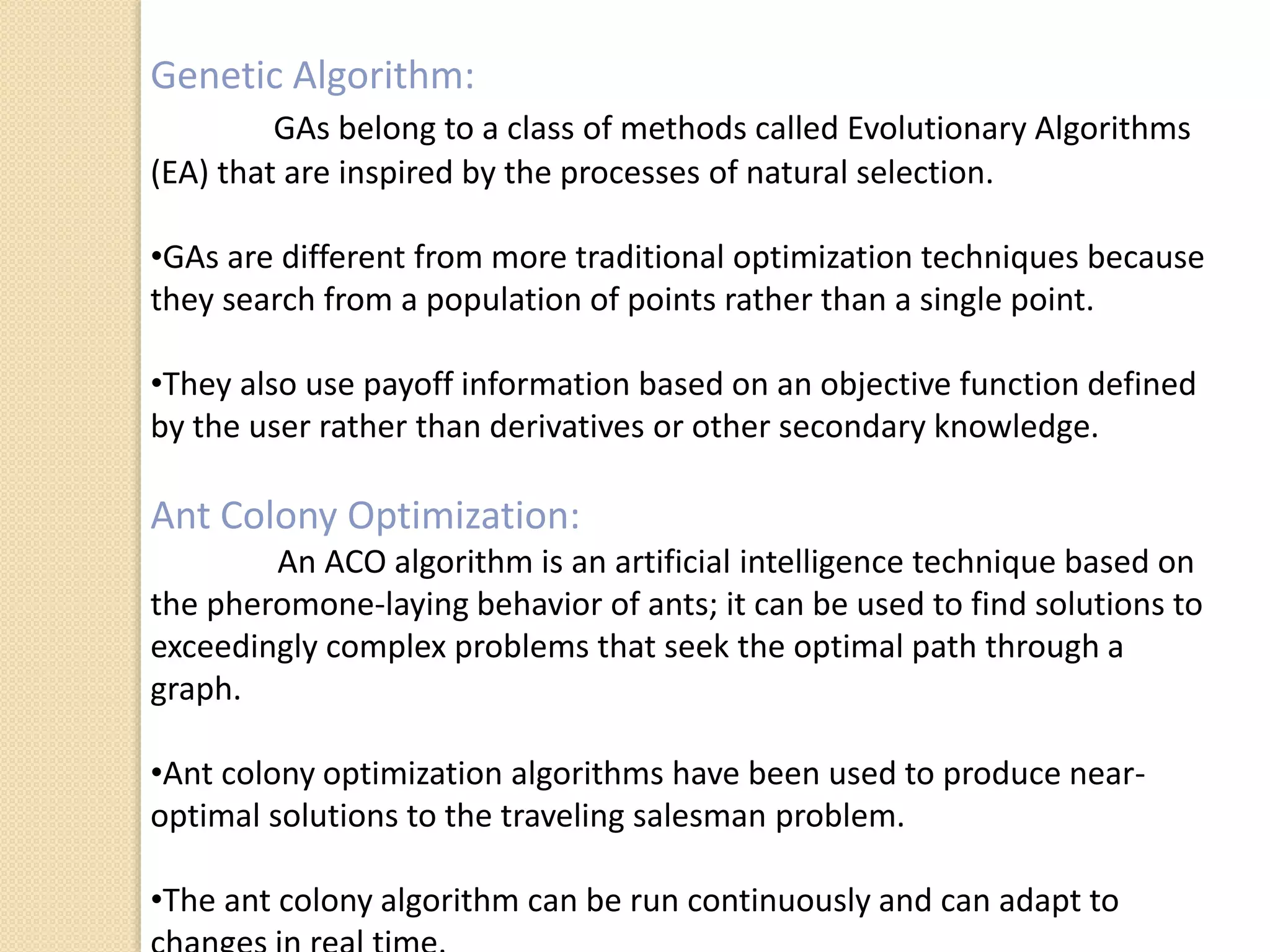
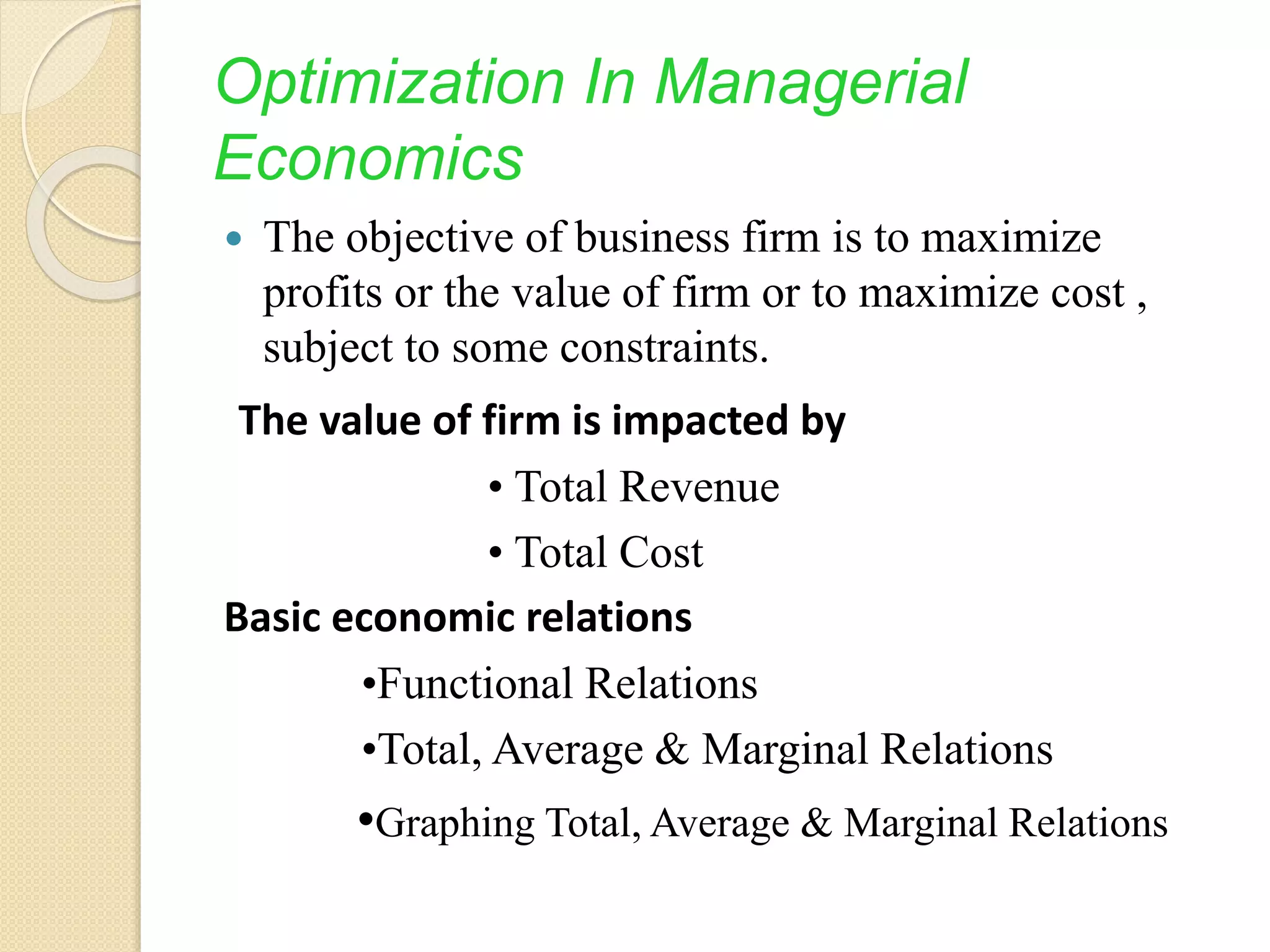
![Often we wish to optimize but are faced with a constraint. In
such case we need lagrangian multiplier.
L=f(X,Z)+λ[Y-g(X,Z)]
To find the optimal values of x & z, we take derivative of
lagrangian w.r.t X,Z & λ: setting these derivatives to zero.
Example:
A firm faces following cost function
cost=c=f(x,z)=
The firm will produce 80 units of x & z, with any
mix of x & z being acceptable](https://image.slidesharecdn.com/optmizationtechniques-230915142552-4cf13c3e/75/optmizationtechniques-pdf-24-2048.jpg)

